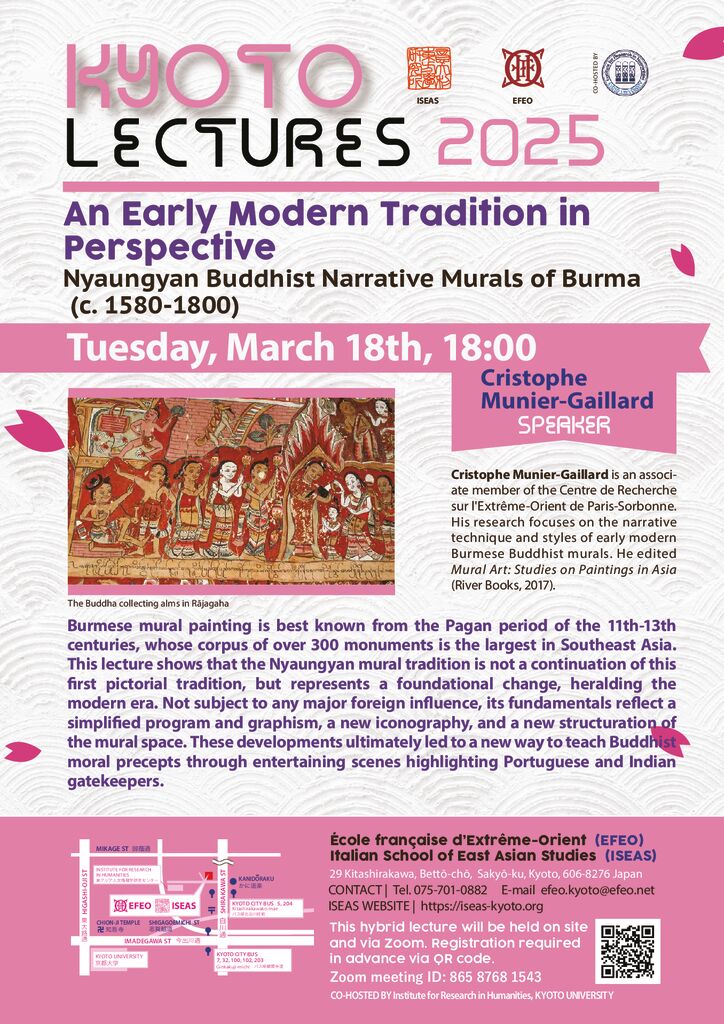Burmese mural painting is best known from the Pagan period of the 11th-13th centuries, whose corpus of over 300 monuments is the largest in Southeast Asia. This lecture shows that the Nyaungyan mural tradition is not a continuation of this first pictorial tradition, but represents a foundational change, heralding the modern era. Not subject to any major foreign influence, its fundamentals reflect a simplified program and graphism, a new iconography, and a new structuration of the mural space. These developments ultimately led to a new way to teach Buddhist moral precepts through entertaining scenes highlighting Portuguese and Indian gatekeepers.
Cristophe Munier-Gaillard is an associate member of the Centre de Recherche sur l’Extrême-Orient de Paris-Sorbonne. His research focuses on the narrative technique and styles of early modern Burmese Buddhist murals. He edited Mural Art: Studies on Paintings in Asia (River Books, 2017).
This hybrid lecture will be held on site (registration required in advance from here) and via Zoom.
Zoom Link: https://us02web.zoom.us/j/86587681543
Meeting ID: 865 8768 1543
